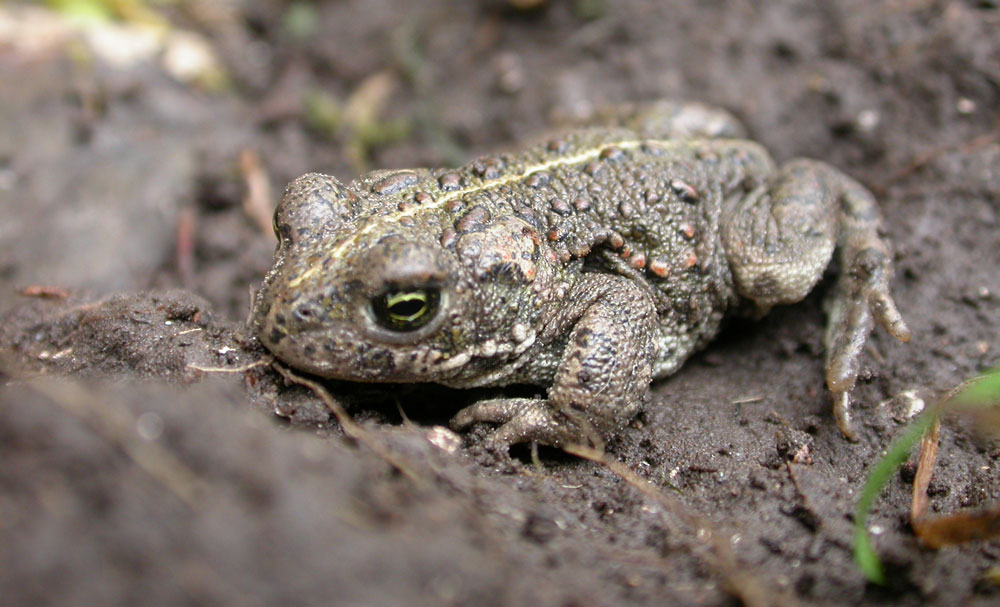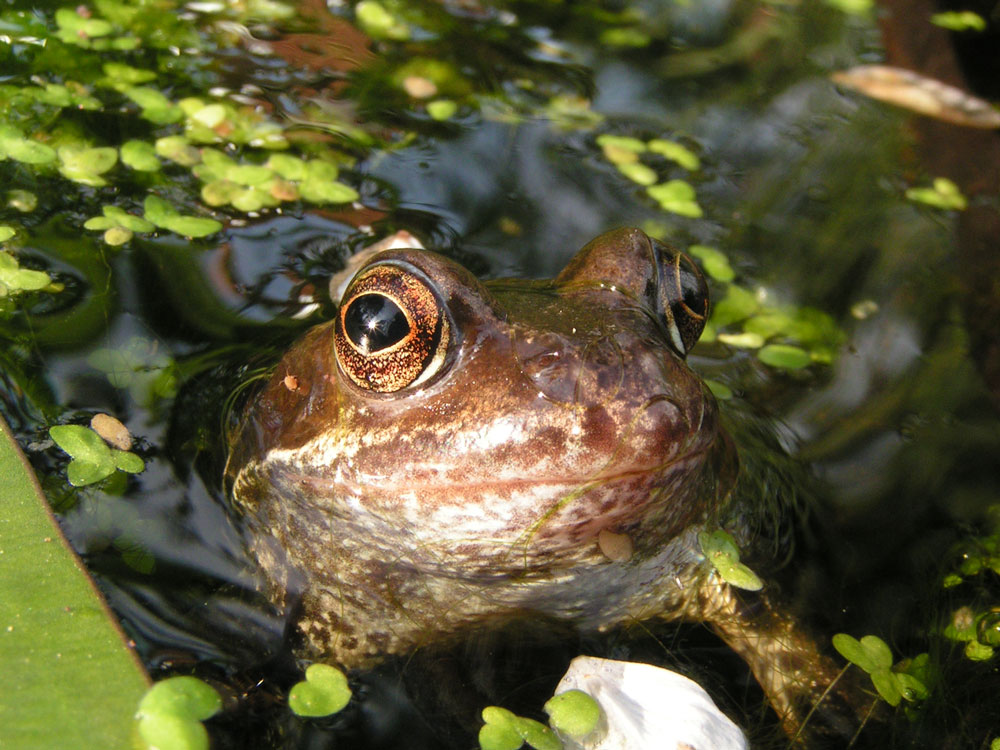In the early months of the year, familiar jelly-like masses break the surface of garden ponds up and down the country. This is likely to be the spawn of the common frog – one of four toad and frog species native to the UK. Dormant through the winter, all four emerge from hibernation to breed in early to late spring.
Common frogs depend heavily on garden ponds in urban areas. You can see them there during the breeding season before they move away to feed on dry land such as woodland and hedgerows. They are usually green or brown with a dark patch behind the eye and get about by hopping, in contrast to the walking motion of the common toad.
The common frog can live up 10 years and the females sometimes lay around 4,000 eggs in one breeding season.
The northern pool frog is the second native frog species but can only be seen in areas of East Anglia.
The common toad, covered in warty skin, is widely distributed around the country. It will travel some distance to find a suitable breeding place in deeper water, often at considerable danger to itself. It is estimated that up to 20,000 tons are killed on roads each year. ‘Toad Crossing’ road signs have been erected in places where large numbers of common toads migrate.

The natterjack toad. Photo By Philip Precey
Due to habitat loss, the natterjack toad is a much rarer sight and is concentrated in coastal sand dunes and heathland. With so much of this landscape in Dorset, it is sometimes possible to spot them here. The natterjack can be identified by the striking yellow line down its back and from the way it runs across the ground. In spring, the louder males call or ‘croak’ around the water’s edge, the higher their chance of attracting a female. The spawn is laid in single string formations in warm shallow water.
Look out for these three amphibians in the coming weeks as they wake from hibernation and head to our ponds and waterways to spawn.
Find out more about how you can help Dorset’s wildlife at dorsetwildlifetrust.org.uk
By Sarah Lambert










Leave a Reply